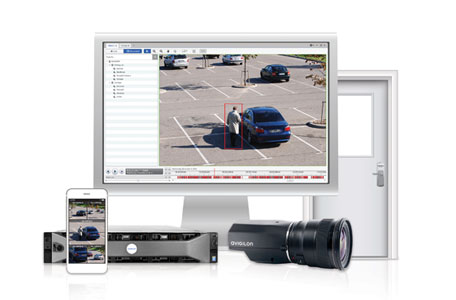Video surveillance systems are on the brink of permanent transformation. Legacy CCTV systems were static and singular in their functionality, but today’s IP-based video surveillance systems are mobile and multi-faceted. Wireless networking technology has made video camera systems more resilient to network downtime. Digitization has expanded our definition of “real-time video surveillance.” Advanced video analytics can autonomously understand key events captured on camera and immediately notify the appropriate staff through digital communication channels.
This sea of change indicates a shift from passive to active surveillance. Yesteryear’s brainless systems are evolving into real-time, always-on surveillance and alarm networks. They can interpret events of significance and, if necessary, alert appropriate authorities and personnel. From an operational standpoint, this improves cost effectiveness, convenience and performance. It also means that organizations can configure surveillance systems to solve specific problems rather than simply buy “the next best thing” – that is, presuming they have the expertise to design and implement those custom deployments.
The only foreseeable caveat to creating custom surveillance, alarm and remote monitoring and management systems is that they require a deep knowledge of the many technologies available on the market in order to yield a return on investment.
Making the ‘Problem-First’ Approach to Surveillance Work for You
Identifying the specific components needed for a high-performance, custom surveillance or remote monitoring system isn’t easy. Many organizations lack a sufficient understanding of:
- The full scope of surveillance technologies on the market and how they can integrate with one another.
- The spectrum of use cases for those integrated technologies.
- How they can cut costs and improve performance by carefully selecting certain vendor over others.
Uninformed cobbling results in poor bidding specifications or RFPs being sent out to the wrong vendors and manufacturers altogether. This not only amounts to time wasted and missed opportunities; it also precipitates piecemeal surveillance systems with inflated long-term costs that won’t yield the best possible outcome for your organization.
To illustrate this point, below are just a few of many technologies that can be mixed, matched and assembled:
- Wireless cameras: The ability to connect wireless, IP cameras to mobile networks enables quick deployment of video surveillance in places that lack the underlying power infrastructure, or in situations where implementing wired infrastructure is too costly, too time-consuming or otherwise impractical.
- Fault-tolerant networking: Mesh networks can be deployed to support long-range or highly-scattered IP cameras; for instance, they can support a video surveillance network on a public transit system, or network connectivity in remote areas.
- Artificial intelligence: AI and other forms of advanced analytics are being used to interpret recorded video; for example, natural language processing helps first responders and security staff immediately pull up a specific incident rather than sift through hours of footage. Certain incidents could also trigger notifications to certain personnel’s smartphones. This could be a security incident or simple verification that an expected shipment has arrived on a construction site.
- Facial recognition: Some video management software not only recognizes faces, which can then be redacted for privacy protection, but can also match them to specific identities such as an individual on a missing person’s list or a known criminal.
- IoT sensors: IoT sensors can be used to detect the presence of moisture accumulation in a data center, seismic activity near a dam, heat and/or motion in a restricted area and so much more.
- RFID-enabled alarm systems: A camera positioned in front of a secure access point, for example, can be fitted with an RFID scanner that verifies that any human presence in the frame has a matching RFID card. Should the camera detect a person without the required RFID card, it would trigger an alarm to notify security personnel of an unauthorized intruder.
- Open-platform integrations: Best-in-class video management platforms can integrate seamlessly with other top-performing systems, making them more extensible and multi-functional. Organizations can cherry-pick the best apps for the job rather than bind themselves to the limitations of one vendor or pay many thousands of dollars to develop custom integrations.
Given the breadth of technology today, there’s evidently no shortage of potential for custom surveillance and security systems. Whether or not they realize it, what most organizations really need is someone to help them be more aware of their options so they can deploy solutions that cost-effectively solve their problems and improve operations.
Schedule a Free Consultation Today
The problem-first approach to surveillance and remote monitoring and management is powerful: It’s more scientific, evolved and effective than its predecessors. You start with a problem, and you implement technology that solves that problem and conveniently meets your requirements.
At Day Wireless Systems, our highly-experienced team of security and surveillance experts is dedicated to educating organizations about the full scope of options available to them. We work within your budget to design a system that not only meets your requirements but also exceeds your expectations of what you knew to be possible. And because we’re a vendor-agnostic service provider, we always source the best, most cost-effective hardware and software for the job.
To learn more about how our end-to-end security services and systems can help you – either with video surveillance, remote monitoring and management, or other technology initiatives – contact us today for a free, noncommittal consultation.

